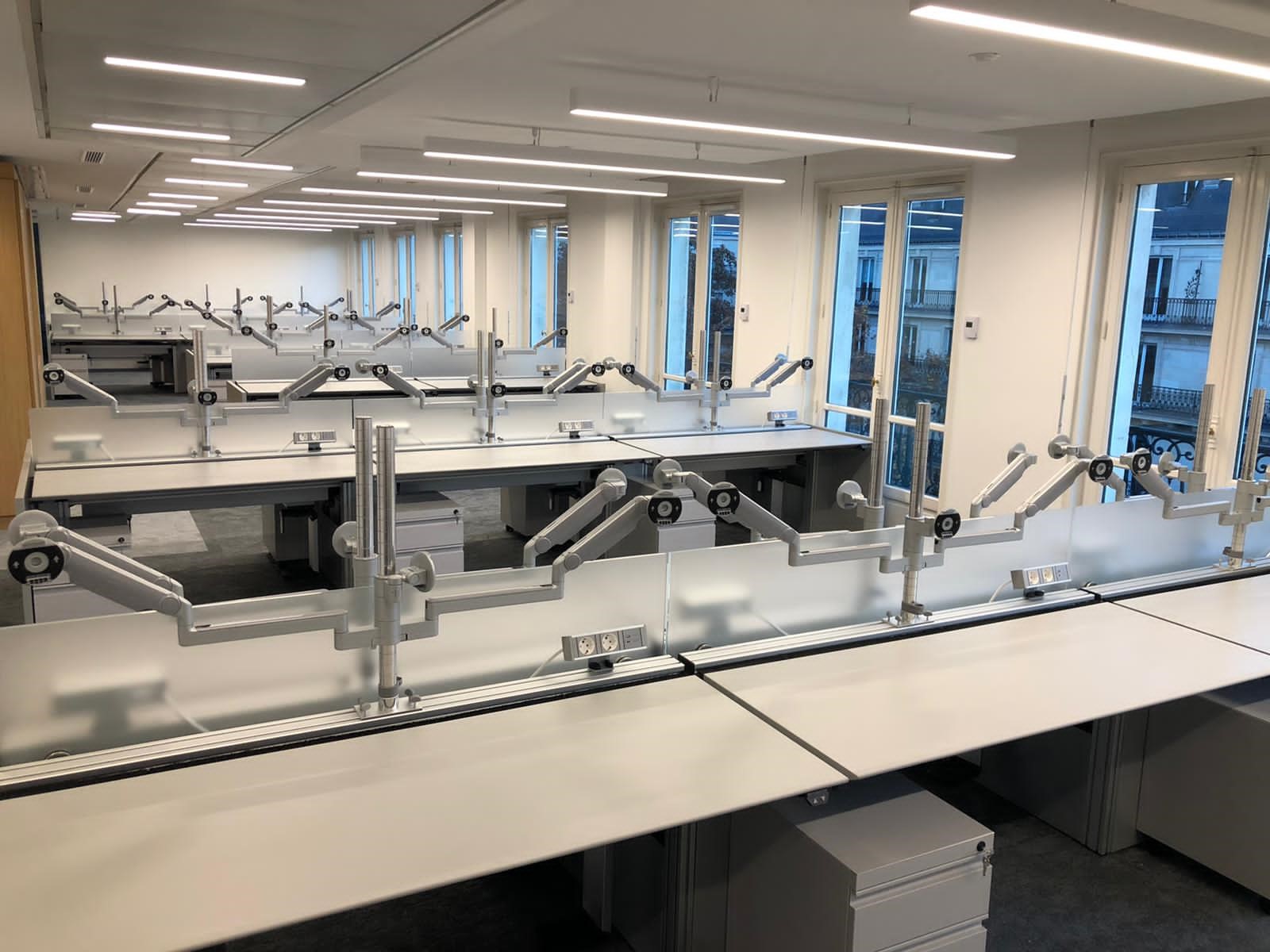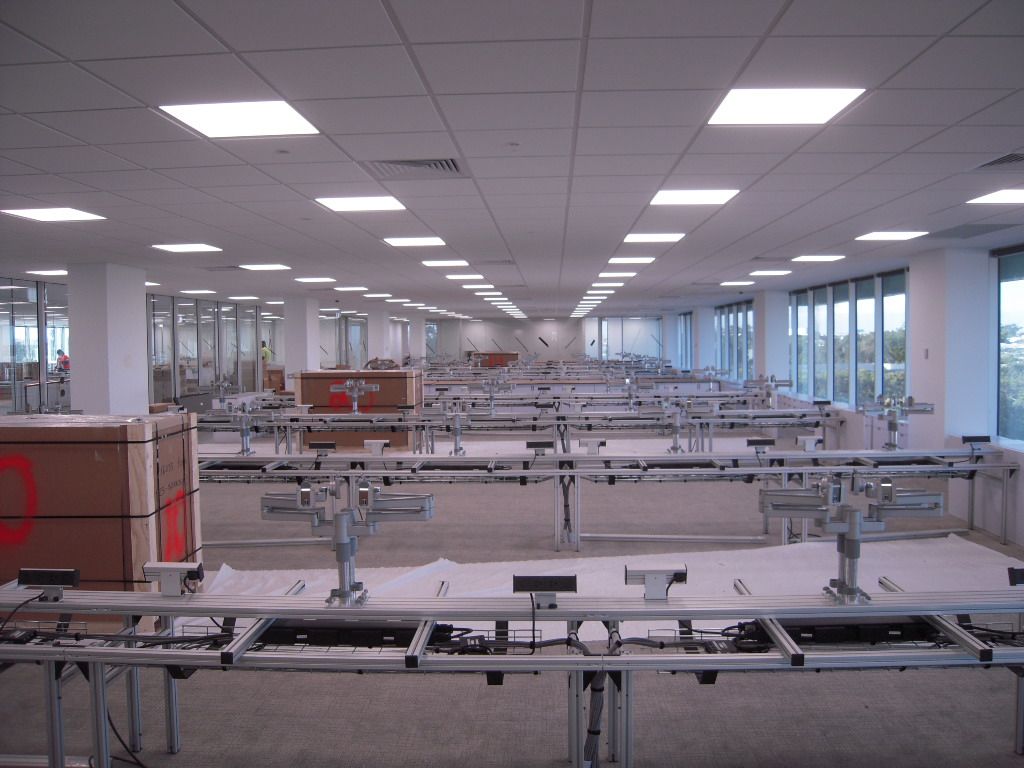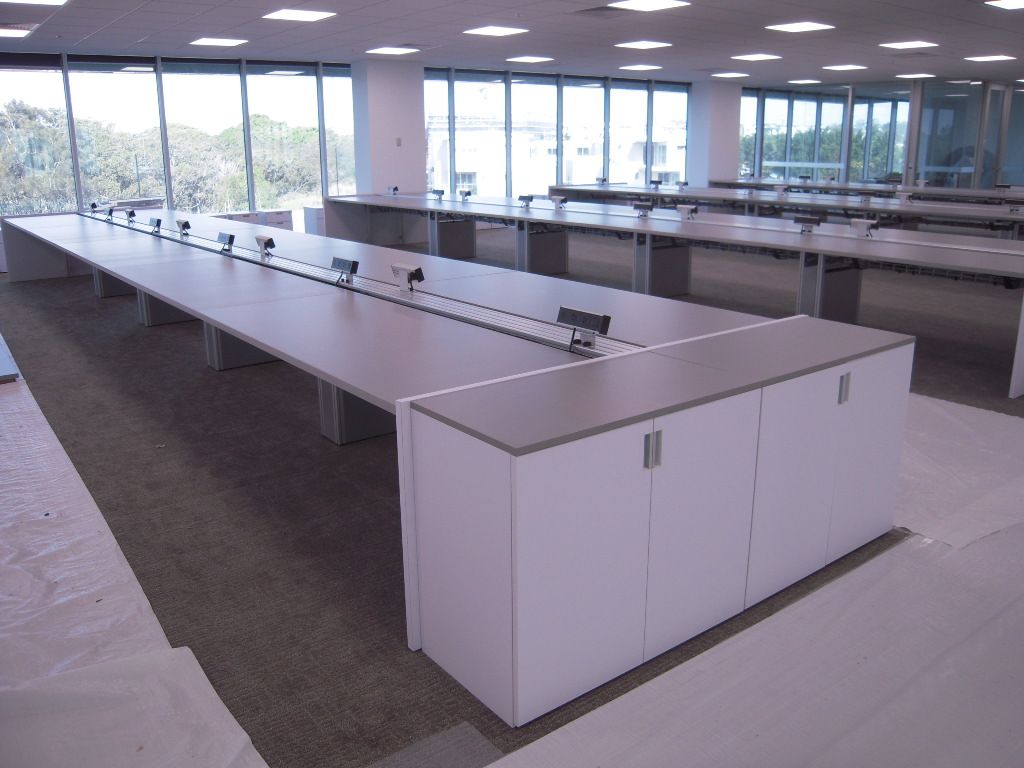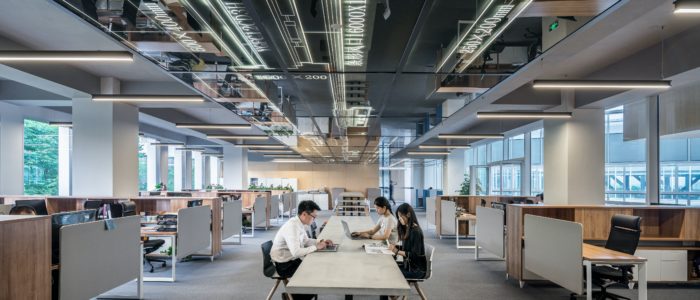
Critics Of Open Plan Offices Shift Their Focus To The Downside Of Virtual Meetings
Why can’t remote work replace the physical workplace altogether? According to an article in the Harvard Business Review cited by workplaceinsight.com,
“…Meetings are important, of course, but not more so than human moments, because it is relationships, not merely acts of collaboration, that create trust between coworkers. Studies have long shown that frequent in-person interactions lead to commitment, support, and cooperation among people on teams. That’s why many tech companies that boast about being 100% online still have an office. Even those that have no physical space emphasize that teams should meet face-to-face on a regular basis…”
Read more at:
https://workplaceinsight.net/well-at-least-nobody-is-whinging-about-open-plan-offices-anymore/
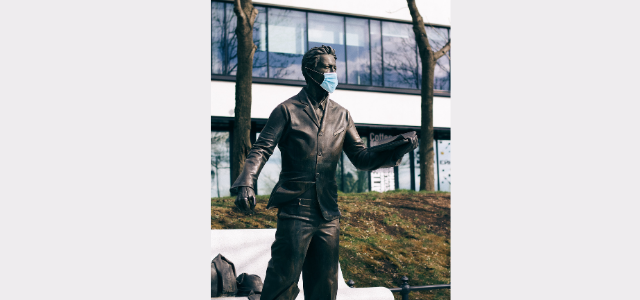
Office Metamorphosis from Physical to Virtual
John Seabrook has written an insightful article, published by the New Yorker, about the paradigm shift from physical offices to remote work and how companies may navigate these unchartered waters in the wake of the pandemic.
The writer poses a thought-provoking set of questions: “What’s an office for? Is it a place for newbies to learn from experienced colleagues? A way for bosses to oversee shirkers? A platform for collaboration? A source of friends and social life? A respite from the family? A reason to leave the house? It turns out that work, which is what the office was supposed to be for, is possible to do from somewhere else”.
In the digital world before the covid shift, the tools that were meant to improve communications in the workplace actually reduced the in person interactions that the open-plan office was supposed to enhance. Now the same tools make it possible to work remotely rather than wasting time online in the office. Surveys cited in the article show that employees actually worked harder from home during lockdown.
Expensive office space in prime markets has become a costly burden. The office has gradually evolved from high-to-low to no workstation panels, culminating in rows of desking systems. That proximity won’t do in the era of the pandemic. Conventional wisdom further evolved during the pandemic, championing the use of antimicrobial materials for high touch locations in the workplace and installation of plexiglass shields and signage promoting social distancing. Finally it became evident that the virus was more likely to spread through HVAC systems than through surface contact and that plexiglass would not slow the spread if the virus is circulating through the ventilation systems.
A VP at Microsoft interviewed by the writer explained that the pandemic is creating a “second digital transformation” by connecting employees’ computers through the cloud wherever they are working. Companies are investing money saved by downsizing physical offices, into cloud-based offices with digital whiteboards and virtual conferencing tools. One of the writer’s ironic conclusions is that the virtual office may eliminate privacy altogether, as every keystroke will be trackable.
Read the full article at:
https://www.newyorker.com/magazine/2021/02/01/has-the-pandemic-transformed-the-office-forever
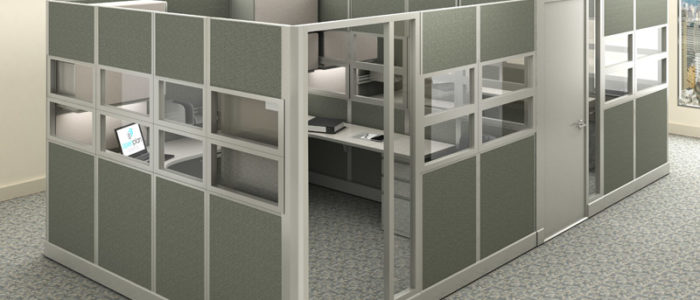
Top Office Furniture Manufacturers Rely On E-Commerce Acquisitions To Stay Relevant Through The Pandemic
The business model for office furniture manufacturers and their contract furniture dealers must evolve as a result of the changing workplace in the wake of the pandemic. Will cubicles with high walls return to the workplace or will the WFH model shift purchasing decisions from facility managers, architects and interior designers to the employees working from home? In the short term, home offices will surely be upgraded to more ergonomic, height-adjustable desks, purchased by employees with reimbursements funded as expenses by their employers. In the long term, we are likely to see a combination of remote workforces operating from home offices, together with downsized office spaces, remodeled with more expensive workstations with high panels and socially distanced layouts, funded as capital equipment expenditures which can be depreciated over time. In the meantime, the manufacturers who had the foresight to acquire established e-commerce channels, will gain a larger share of the market. Rather than considering e-commerce the enemy to the manufacturers’ survival, some companies have bolstered their range through strategic acquisitions such as Kimball International / Poppin.com, Herman Miller / Design Within Reach and Knoll / Fully.com.
Read more about these trends at: https://www.workwhilewalking.com/open-office-layout-covid-19-impact-on-future-design-of-commercial-office-spaces-and-home-office-accommodations
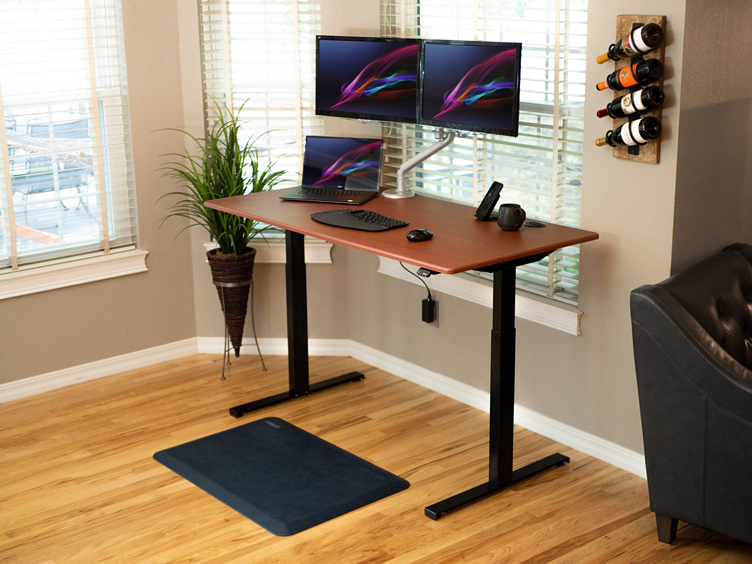
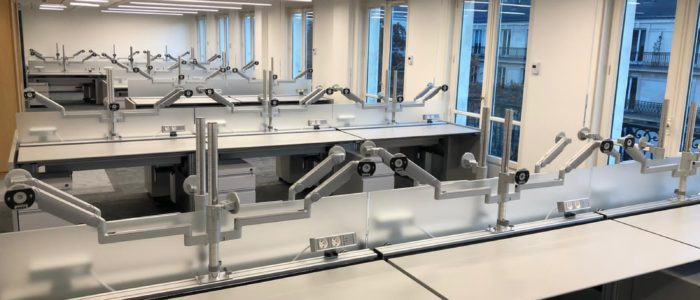
Paris Trading Floor Project Completed Despite Lockdown And Riots
Trading desks manufactured by LaCour were shipped from New Jersey to Paris, France and installed without a hitch in the midst of the pandemic lockdown. The project was completed minutes before riots broke out in the streets of Paris to protest the lockdown. The shipment was routed via the port of Rotterdam, Holland to bypass delays at the port of LeHavre, France. The Dutch installation crew were equipped with parking permits from French Police and special dispensations allowing them to work until 6 pm every day, at which time they had to return to a rented apartment to comply with the evening curfew.
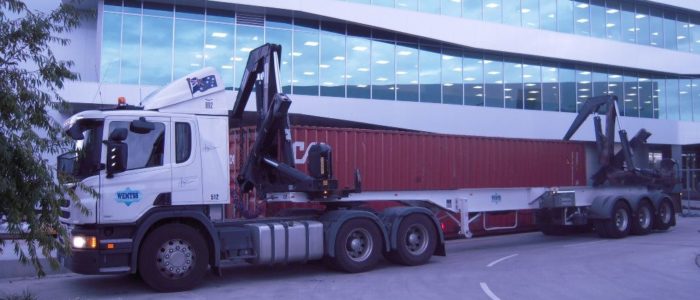
Overseas Brokers Handles LaCour Trading Desk Project in Australia
LaCour has continued to expand its partnership with Overseas Brokers to handle their global transportation by sea and air, cross-border customs formalities, delivery and installation of their products, all over the world. LaCour is a major manufacturer of custom-designed trading desks, and we’ve completed projects in London, Monte Carlo, Geneva, Shanghai, Singapore, Hong Kong, Tokyo, San Juan, and Brisbane, Australia. Next up is Paris, France.
Take a look at photos from a 300 desk project we handled, on behalf of LaCour, from New Jersey to Australia, for a metals and energy trading company. The photos show the process at destination starting with grounding of ocean containers at site, installation of frames, attaching work surfaces and placement of pedestals. Through Overseas Brokers’ global network of trusted logistics partners, we are able to make this a cookie cutter process for global distribution, easily duplicated worldwide – without the need for a local dealer in every market.
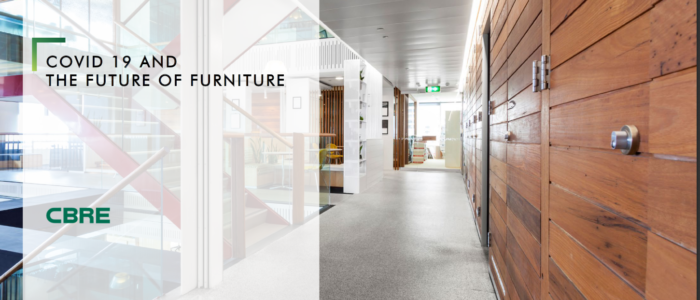
CBRE Publishes Insightful Forecast For The Future Of Office Furniture In The Workplace
CBRE, the largest commercial real estate services company in the world, has published an excellent study of measures required to combat exposure to Covid-19 in the workplace. The study includes detailed graphics explaining how furniture and layouts can be reconfigured in the short, medium and long term.
Read the full report at:
https://irp-cdn.multiscreensite.com/e894f327/files/uploaded/Future%20of%20Furniture%20post%20COVID%2019_CBRE%20Furniture%20Advisory.pdf
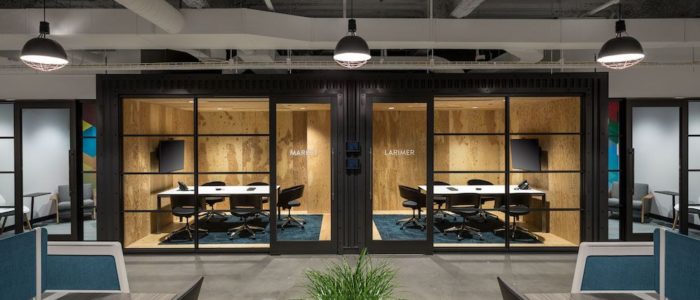
Office Design Likely to Come Full Circle From Private to Open Space and Back To Private Space
The workplace has evolved from an emphasis on private office suites, to open-plan workstations, to free-flowing collaborative open spaces. In the post-pandemic universe, we are likely to see a return to private spaces with micro private offices, larger workstations with barriers to transmission, fewer large conference rooms, elimination of small huddle spaces and a new functional style integrating tech-based solutions with social distancing and enhanced digital interaction.
Read more at:
https://www.workdesign.com/2020/04/what-people-can-expect-from-the-return-to-the-workplace/
(Photo credit: Work Design)
